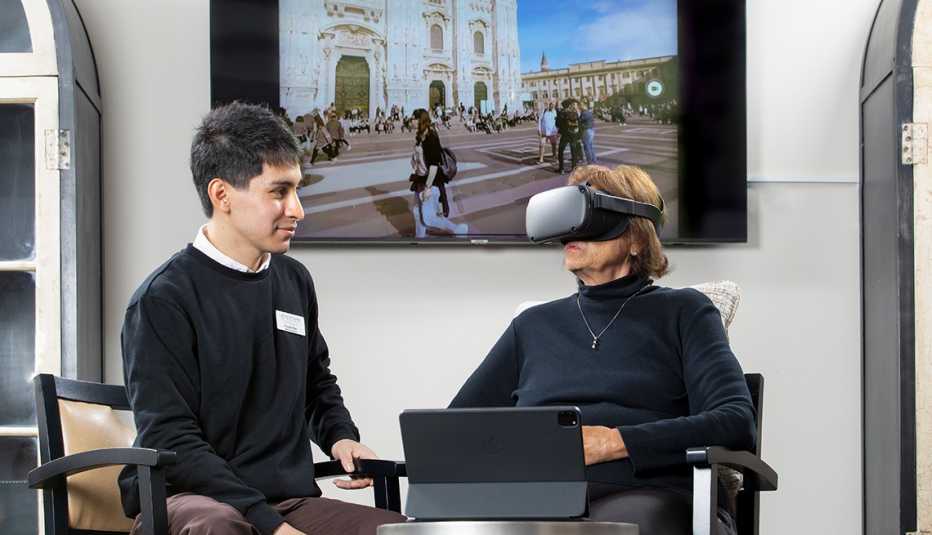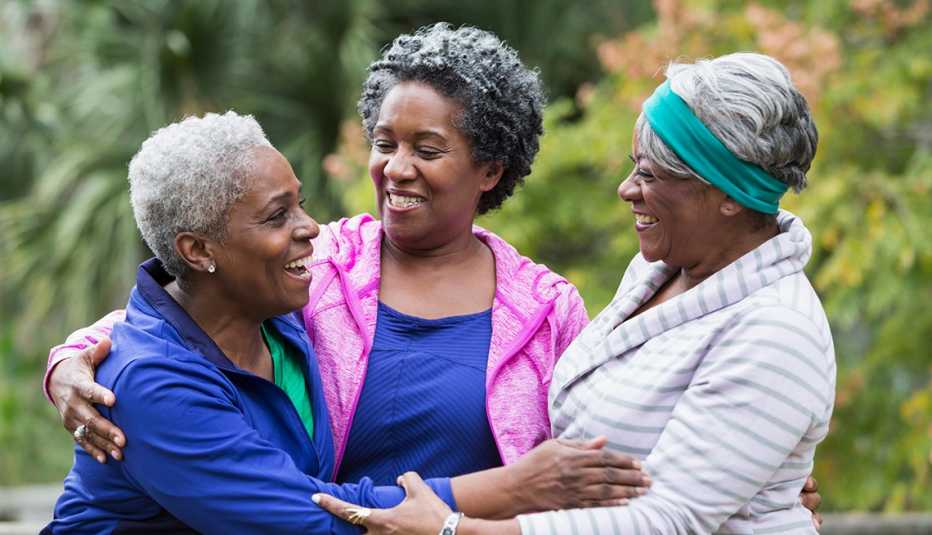Staying Fit
Connie Brown is married and has three daughters, seven grandchildren and one great-granddaughter. But when the pandemic hit, so did a sense of isolation. “I was feeling lonely,” the 82-year-old Texan says.
So she signed up for a program called Big & Mini that provided fresh companionship in the form of weekly video calls with a 21-year-old woman multiple states away. In her conversations with Nicole, of North Carolina, Brown found they shared a passion for vinyl records, and Brown helped her new friend cope with taking college classes remotely while living alone in an apartment. The two haven’t missed a week of chatting. “We’re just two people who care about each other,” Brown says.


AARP Membership— $12 for your first year when you sign up for Automatic Renewal
Get instant access to members-only products and hundreds of discounts, a free second membership, and a subscription to AARP the Magazine.
Intergenerational programs like Big & Mini are making inroads in what has become a significant public health crisis: loneliness among older adults. According to an AARP survey, roughly a third of Americans 45 and older reported feeling lonely. And that has health effects, among them a higher risk of dementia, greater rates of depression and nearly four times the risk of death among heart patients.
Loneliness was a health issue long before COVID. Julianne Holt-Lunstad, a professor of psychology and neuroscience at Brigham Young University, says major life events, such as loss of a spouse, retirement or a serious health condition, often lead to less interacting.
Making connections outside the usual peer groups is particularly helpful, says Donna Butts, executive director of Generations United, a national organization that promotesintergenerational programs. When older people interact, the conversation tends to focus on “what hurts, who died and what medication you’re on,” she says. “Bringing two generations together results in a different kind of dialogue.”
Programs are usually free to participants and tend to follow a similar format, with regular one-on-one meetings. Some services target specific audiences. SAGEConnect, for example, has offered programs for older LGBTQ adults since March 2020. But surprise pairings is the key. “The more different two people are, the more fun they have,” says Dana Griffin, CEO of Eldera, an intergenerational mentoring program that also launched in March 2020.
Some Programs That Promote Interaction
Big & Mini
Connects older adults with people generally 18 to 25 years old. Matches are made using an algorithm that takes into account each person’s interests, background and availability. Participants connect through video calls.
Number of participants: 5,000
Website: bigandmini.org
Eldera
Pairs mentors 60 and older in the U.S. with children ages 5 to 18 from 22 countries. Mentors fill out a profile that includes their interests, “dream experiences” and “superpower,” among many other things, and then get matched with kids who are different from them. Connections are made through video chats. Mentors also meet with one another every two weeks to develop their coaching skills.
Number of participants: Over 2,000
Website: eldera.ai
SAGEConnect
Pairs older LGBTQ adults with volunteers from a range of generations. The paired participants engage in weekly phone calls.
Number of participants: 440 older adults and over 500 volunteers
Website: sageusa.org/sageconnect
Dorot Caring Calls
Connects older adults with volunteers 18 and up for weekly phone calls. Prospective volunteers supply information about themselves. Social workers and program staff match older adults with volunteers, based on participants’ preferences.
Number of participants: 2,000-plus in Caring Calls program
Website: dorotusa.org
Julie Halpert writes on health, science and money for The New York Times, The Atlantic, AARP and others.



































































